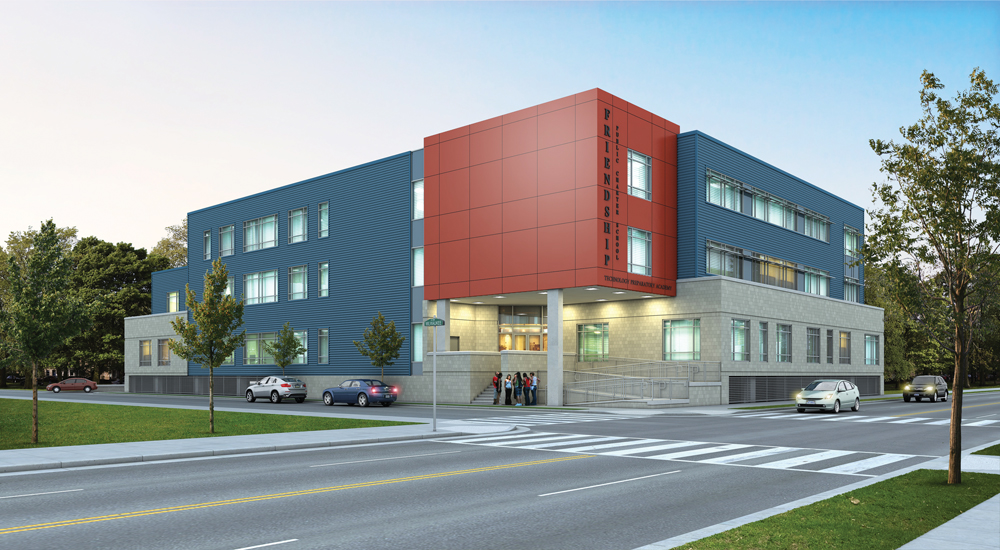Editor's note: This article was published as part of our April 2013 report on "23 things you need to know about charter schools."
Competition for grants, loans, and bond financing among charter schools is heating up, so make your clients aware of these potential sources recommended by experts we consulted for our charter schools report:
1. Opportunity Finance Network (www.opportunityfinance.net), a national network of community development financial institutions, known as CDFIs.
2. Charter School Development Corporation (www.csdc.org), a CDFI with a focus on charter schools that serve predominately low-income students and communities with poorly performing public schools.
3. Partners for the Common Good (www.pcgloanfund.org), a nonprofit community investment corporation.
4. The Reinvestment Fund (www.trfund.com), which finances charter schools in the Mid-Atlantic states.
5. Local Initiatives Support Corp. (www.lisc.org), a nonprofit group that supports charters serving low-income neighborhoods.
6. State and local finance funds, such as the Illinois Finance Fund (www.iff.org). In Los Angeles, where 12% of public school children attend charters, the Los Angeles Unified School District has allocated $30 million from Proposition 39 bonds to “augment” up to 35% of the cost of a qualifying charter construction plan. So far, three projects have been approved.
Related Stories
Laboratories | Jan 28, 2022
3 must-know strategies for developers in today’s life sciences industry
While the life sciences industry had been steadily growing, this growth exploded when the pandemic arrived—and there is no indication that this lightning-fast pace will slow down any time soon.
Cultural Facilities | Jan 27, 2022
Growth in content providers creates new demand for soundstage facilities
Relativity Architects' Partner Tima Bell discusses how the explosion in content providers has outpaced the availability of TV and film production soundstages in North America and Europe.
Sponsored | Webinar | Jan 27, 2022
On-demand webinar: Open plenum design with baffles
With their vast, airy aesthetics, open-plan interiors offer a feel that can inspire and support occupants. But they can also create acoustical challenges that negate the effects of all that beauty. Baffles are an ideal ceiling design solution that address both aesthetics and performance.
Architects | Jan 27, 2022
Gensler’s latest design forecast is also a call to action
The firm urges the AEC industry to take the lead in creating a fairer, cleaner built environment that faces many obstacles.
Architects | Jan 26, 2022
HMC Architects Welcomes New Director of Sustainability
The Sacramento studio of leading national architecture and design firm HMC Architects has announced the appointment of new Director of Sustainability Jennifer Wehling, who joined in December
Market Data | Jan 26, 2022
2022 construction forecast: Healthcare, retail, industrial sectors to lead ‘healthy rebound’ for nonresidential construction
A panel of construction industry economists forecasts 5.4 percent growth for the nonresidential building sector in 2022, and a 6.1 percent bump in 2023.
Sponsored | Steel Buildings | Jan 25, 2022
Structural Game Changer: Winning solution for curved-wall gymnasium design
Sponsored | Steel Buildings | Jan 25, 2022
Multifamily + Hospitality: Benefits of building in long-span composite floor systems
Long-span composite floor systems provide unique advantages in the construction of multi-family and hospitality facilities. This introductory course explains what composite deck is, how it works, what typical composite deck profiles look like and provides guidelines for using composite floor systems. This is a nano unit course.
Sponsored | Reconstruction & Renovation | Jan 25, 2022
Concrete buildings: Effective solutions for restorations and major repairs
Architectural concrete as we know it today was invented in the 19th century. It reached new heights in the U.S. after World War II when mid-century modernism was in vogue, following in the footsteps of a European aesthetic that expressed structure and permanent surfaces through this exposed material. Concrete was treated as a monolithic miracle, waterproof and structurally and visually versatile.
Urban Planning | Jan 25, 2022
Retooling innovation districts for medium-sized cities
This type of development isn’t just about innovation or lab space; and it’s not just universities or research institutions that are driving this change.

















